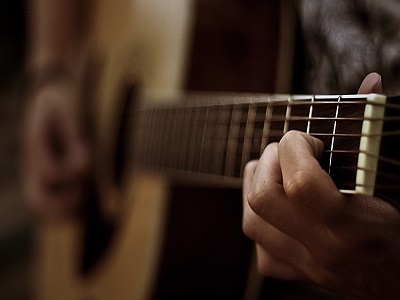Muted Strumming For a New Level in Rhythm Playing
 Techniques make a player. Whether it is sweeping or plucking, techniques are everything. With that being said the more you know the better you are, right?
Techniques make a player. Whether it is sweeping or plucking, techniques are everything. With that being said the more you know the better you are, right?
Wrong.
The more techniques you know and are proficient with, the better of a player you become.
Knowing all the techniques in the world won’t do you any good if you are sloppy with all of them. The same goes with all techniques, even ones such as muted guitar strumming.
While it may seem like an extremely simple technique, many guitarists don’t understand the difference between using and abusing it. In this article, we’ll discuss it.
How To Perform Muted Strumming
First off, you need to look at your strumming hand. Muting is all about your strumming hand. If you are trying to mute with your fretting fingers, you are doing it wrong. A good muter can mute strings that are fretted enough that they won’t even be recognizable. This is what you want to be able to do.
The secret is all in the form. When muting, the butt of your palm should rest against the strings. The further up the strings it is, the less the tone of the fretted notes will come out. If you aren’t fretting, you won’t need to worry about this. If you are, then you will.
While it may seem like the simple fix to mute high up on the bridge, it isn’t, and for two reasons; it isn’t convenient in the middle of a riff, and it can make some ugly noises. One of those noises has actually been popularized as of late. Metal guitarists have come up with the idea that muting your string excessively, higher up on the bridge to create a “djent” sound is appealing.
It isn’t. It sounds awkward.
Muting Positions On Your Neck Affects The Tone
Muting higher up on the neck causes your notes to blend together and makes it harder for the listener to decipher between muted notes and non-muted notes. It also tends to make a reverb-like sound on the tail end of your notes.
The furthest up the bridge that you should mute is –if you have an acoustic—the sound hole. If you are playing an electric, there is no need to move your palm farther than an inch or so from the bridge itself.
Muted guitar strumming is all about digging in with your palm. While this doesn’t mean you need to force your palm through the strings, you want to rest firmly. If your palm is hovering slightly above the strings, it will either simply muffle them or create dead notes.
Practice Is The Key To Muted Strumming.
It may take some time to get used to keeping your palm down on the strings while strumming, as many guitarists learn to keep their palms up when strumming. Take some time each practice to work on your form. Settle in a posture that is comfortable for you.
Make minor adjustments in distance from the bridge and pressure on the strings when necessary. If you want to palm mute, use less pressure. If you want to fully mute the strings, use more pressure. Work on riffs that involve muting to further develop your technique. Have fun, and good luck.
Get Inspired By Awesome Guitar Instructors Today!
GuitarTricks.com is an online guitar learning website that offers lessons that are easy to understand and use. With more than 4,000 video guitar lessons, you are personally coached by more than 45 different instructors!
Try Guitar Tricks with a 14-days free trial now!







Leave A Comment